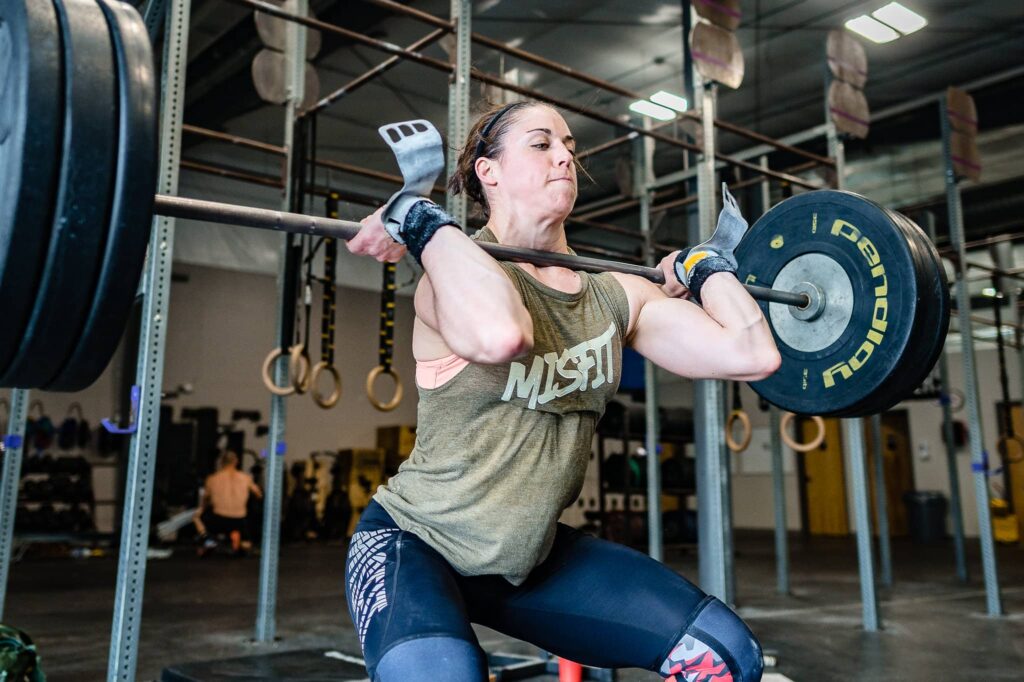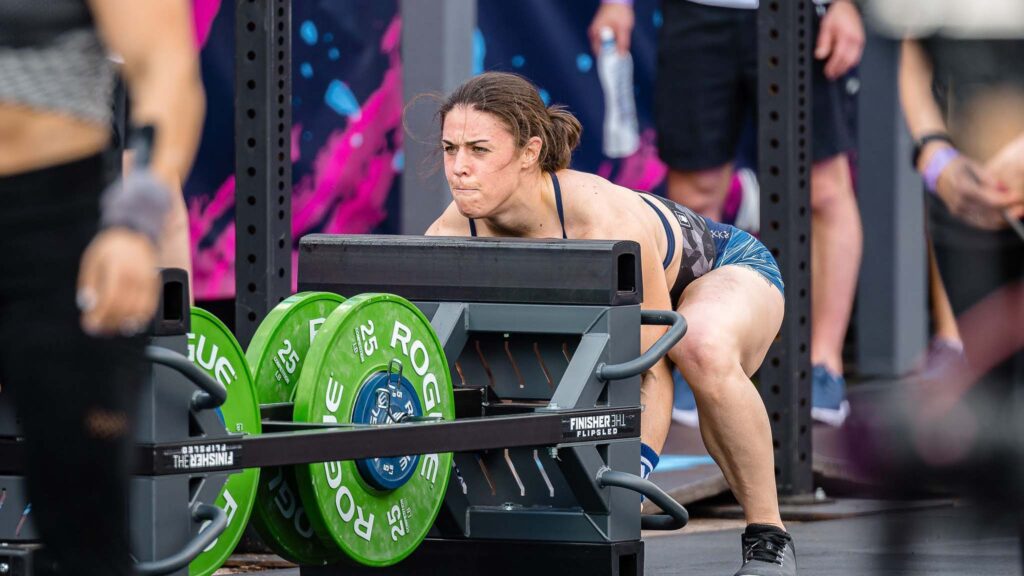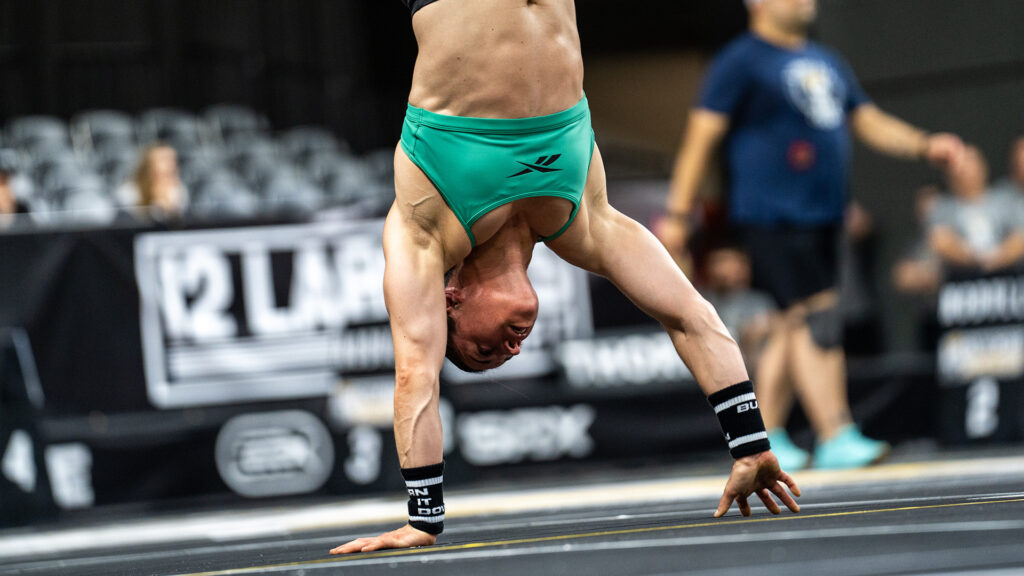Misfit Athletics Rest Day Protocol
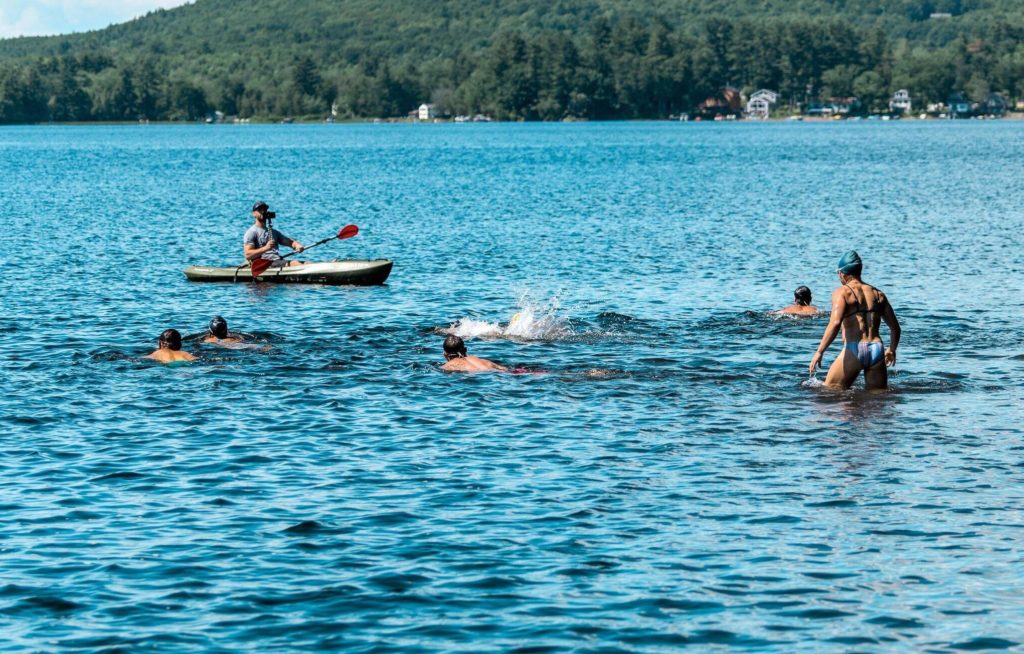
As most of you know by now we’re a pretty blunt group of individuals at MFA. We will always want to know what an athlete’s life and focus is like outside of the gym as well inside it. Part of that lifestyle needing to line up with your goals is how you recover. Below is outline we use to help athletes develop their own active rest protocol. Good luck and hit us up in the comment sections with any questions.
MOBILITY
This refers to the specific work you do on the major joints in your body. We’ve all got “hot spots” that come up for often for us individually, whether it’s the ankles, knees, hips, shoulders, etc. Pick 2-4 on your rest day and devote some real time, energy, and focus to them. Below we have outlined some of our favorites. Test/Re-test is a powerful tool.
Test: Start in the bottom of a lunge position, then step your forward leg up onto a plate(s)/box/bench/whatever as high as you can comfortably hold for 10-15 seconds while maintaining a neutral pelvis and spine. Test both legs.
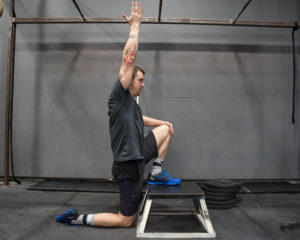
Stretch: Couch stretch three minutes per side.
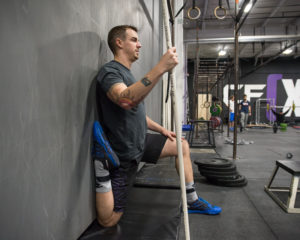
Re-Test: Go back to the lunge position and try to incrementally increase the height of the forward leg.
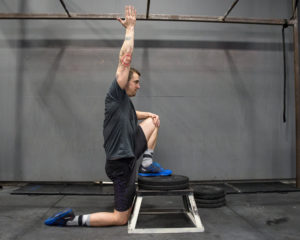
Test: Kick up into a wall facing handstand hold and see how close you can easily get your entire body to be touching the wall.
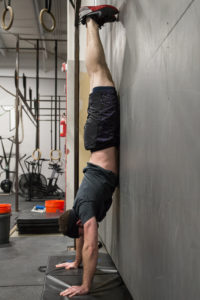
MOB: Lacrosse ball scap smash three minutes per side. Then full t-spine smash on roller three minutes.
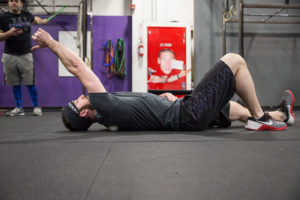
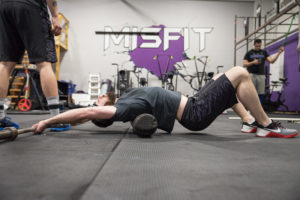
Re-Test: Work your way back into the hold and see how much closer you can hold the position to the wall.
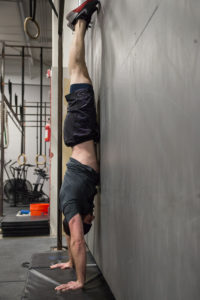
Extra Credit – Choose based on personal mobility issues
Ankles
Test: Squat hold with feet touching together.
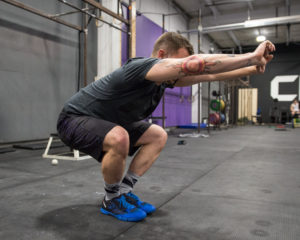
MOB: Foot/ankle/calf floss. Work through both plantar and dorsi flexion, squats, single and double leg jump rope, and jogging.
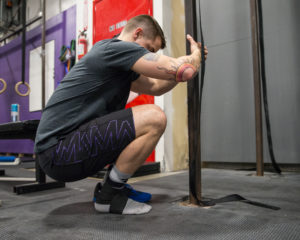
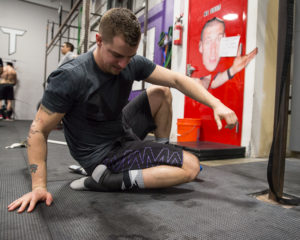
Re-Test: Try to push further into squat without letting heels or big toe losing contact with the floor.
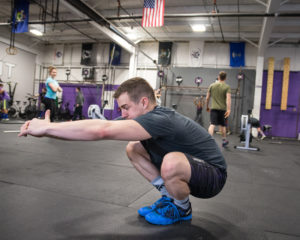
Midline
Test: Stand with your butt up against the GHD, facing away from it, arch your back over the pad and reach back to grab the foot pad. Push the limits of this arch position and feel how it effects your psoas, midline, and rib cage.
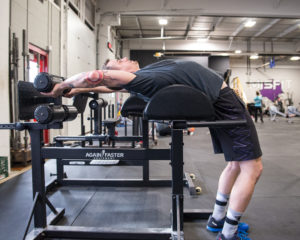
MOB: With a kickball, deflated soccer ball, or Yoga TuneUp Coregeous ball, spend 10 minutes smashing your gut from your pelvis all the way up to your rib cage. Make sure you relax and really let the ball dig in. Check out K-Star with the explanation: https://www.instagram.com/p/BIk5nTIAgUZ/?taken-by=mobilitywod
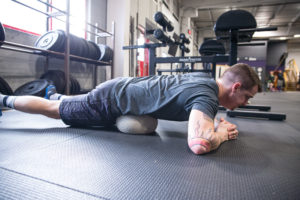
Re-Test: Back to the arch position to see what areas improved. Feel free to re-test multiple times during the 20 minutes to make sure you’re focusing on the right areas and getting results.
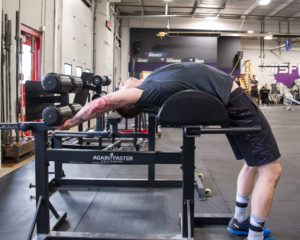
Glutes
Test: Position your legs like you’re getting in pigeon pose but hold your body upright with your arms. Slowly lower your chest and slide your arms forward until you feel tension in the glutes.

MOB: Sit on the ground in the figure four stretch with your hands behind your body holding you up. Stick a lacrosse ball onto your glute max and med and smash both for three minutes per side.
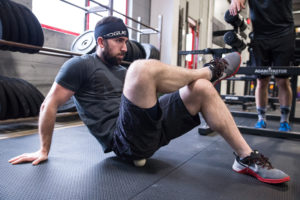
Re-Test: Back to the pigeon with your focus on how the hip rotation feels as you lower your body.
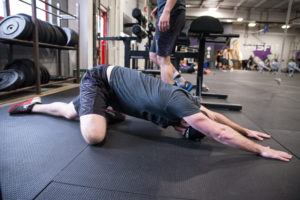
ACTIVE REST CONDITIONING
Our lymphatic system is the place where waste from training can be stored up and cause the soreness we’ve all become so fond of. The way the system pumps and forces this waste out and blood/nutrients in is through muscle contractions. This is why we hit 20-60 minutes of low heart rate conditioning on rest days. Choose anything from walking/hiking, rowing, bike, etc and put the time in to ensure the rest of the week goes as planned.
Fridays are built around the development of your oxidative energy system, primarily through running at a specific HR, in Cycle 1. That means recovery day work should be strictly under 120bpm on Thursdays, and less lower body extensive. That doesn’t mean a long session of slow biking and flossing your hips ankles and knees is a bad idea. It means running in almost any form, or rowing/biking at a high heart rate is a bad idea.
If the running still feels challenging mentally at the heart rates we’ve suggested, feel free to supplement it on Sundays with a 20 minute or less run at 120bpm or less. Yes, that slow.
RANGE OF MOTION WORK
What movements constantly bother you because the range of motion standard is challenging? Once you’ve hit your mobility and slow conditioning the body should be ready for some holds in these positions. Think squat holds, handstands, etc.
Suggestions:
Accumulate three minutes of squat holds.
Accumulate one minute of nose and toes handstand holds.
Accumulate 30 reps of large range of motion gymnastics kips on pull-up bar.
Accumulate 20 reps of inchworm to push-up and back to standing.
This range of motion work is based on feel and should be taken very slowly. Always remember that it’s a rest day and the goal is to get your body ready to do some serious work the next day. Obsession with volume usually just means you have too much free time.
ROMWOD
As most of you already know the benefits of this are not just physical. Take the process seriously and learn to really let go mentally and physically. You won’t regret the state of mind or body. Your 14 day free trial awaits you on the sidebar. We recommend the 40+ minute sessions late in the day on rest days.
Nothing new here for Cycle 1. We obviously still recommend a daily ROMWOD, and vehemently recommend the long ones on rest days. As an athlete stimulating your parasympathetic nervous system every waking minute that you’re not stressing your body on purpose is the ultimate form of recovery.
SLEEP
A lot of athletes laugh about this until they hear you produce testosterone and growth hormone in each ninety minute sleep cycle that successfully reaches deep sleep. That will get the ears perked up normally. Here’s a quick check list of things that can help maximize recovery at night.
- End blue light exposure 2-3 prior to sleep
- Black room out, including electrical tape over any electronic lights
- Phones in airplane mode
- Turn bluetooth and wifi off if you need cell service for work.
- Room temperature 63-67 degrees
- Lower core temperature before getting in bed
- Magnesium supplements
- Entertainment leading up to sleep should be fiction based. Less thinking = more relaxed
- If the average sedentary person needs 5 sleep cycles (7.5 hours) to be fully recovered, is that enough for an athlete? Spend 8.5-9 hours in bed every night that you can.
- Jump your ass out of bed the minute you wake up and get outside for some sun exposure (the more bare skin the better) to help set your circadian rhythm.
- Cut caffeine intake off 8-12 hours prior to bed time based on sensitivity.
#TEAMMISFIT
If you couldn’t tell already, we’re going big in 2018. We is not just the team at Misfit HQ, or team athletes, or remote clients, we is ALL of you as well. If you want to become part of the misfit family all we ask is a commitment to focus and hard work in each training piece, and treating your recovery likes it’s even more important than your training. You will be VERY happy with what happens come February.
